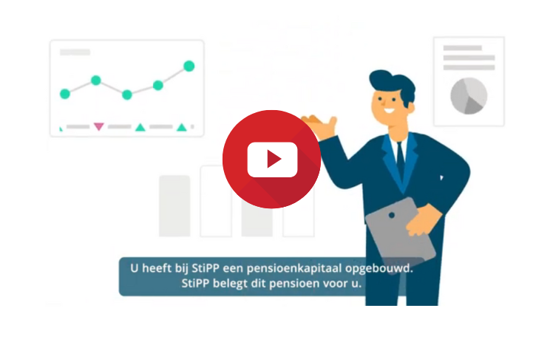StiPP invests for all participants in two main categories:
- fixed income securities (government bonds, corporate bonds and mortgage loans) with a lower but fixed expected yield;
- business values (shares and real estate) with a higher, but variable expected return.
Both fixed income and corporate values can vary in investment value. Business values normally exceed fixed income.
What we invest in for you depends on your age. We invest through a 'lifecycle'. For younger participants, we invest more in business values. The investment risk is slightly higher, as the pension of these participants is still far in the future. As you get older, we gradually reduce the investment risk. We then invest more and more in fixed income securities. The risk of a higher or lower interest rate is also hedged in steps. This ensures that the amount of the pension benefit that you will receive at retirement is increasingly fixed.
Video:
In this short animation we would like to tell you more about how StiPP invests your pension. Click on the image to start the animation. Below the animation you will find more detailed information per part.
Diversifying investments
In our investment policy, we opt for the best possible balance between risk and return. We always invest in different asset classes. For example, investments in shares and real estate are riskier than investments in bonds. We also spread the investments across regions and countries, across different sectors and over many different individual shares, bonds and real estate objects. By diversifying the investments, we limit the investment risk.
Age-conscious investing
When investing, StiPP takes your age into account. If you are still young (and therefore far from retiring), we invest your pension money with more risk. This way you have a better chance of a higher pension. But the chance of a lower pension is also greater. The idea is that you have enough time to make up for any setbacks when you are still young. The older you are, the less risk we take with your pension money. As of 47 we reduce the risk. This gives you more certainty about the amount of your pension and prevents your expected pension benefit from falling (significantly) shortly before your retirement date. From the moment we start taking less risk, the chance of a higher pension is also lower.
